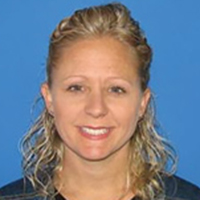To improve revenue cycle KPIs, Nebraska Medicine focuses on employee engagement
- Nebraska Medicine improved the performance of its revenue cycle operation by emphasizing employee engagement, according to a presentation at HFMA’s 2020 Digital Annual Conference.
- Noteworthy progress has been made in discharged not final billed days.
- Quality-related audits and associated training have been key engagement tools.
For hospitals and health systems, achieving operational improvement depends on more than establishing sound policies and processes and installing state-of-the-art equipment.
The ability to engage employees in improvement initiatives is probably the most vital component, two leaders with Nebraska Medicine said during a presentation in August at HFMA’s 2020 Digital Annual Conference.
“We’ve really focused on employee engagement a lot harder in the last few years than we ever did historically,” said Sheila Augustine, director of patient financial services.
Although the organization’s leaders have always tried to be open to change, that approach may not suffice because “sometimes staff doesn’t know what they don’t know,” so they don’t think to bring up new ideas or questions, Augustine said.
Recent efforts at engagement aim to surmount such barriers. Among the positive outcomes, said Augustine and Stacie Adcock, revenue cycle manager of QA, education and systems, are noteworthy improvements in KPIs such as discharged not final billed days.
In that metric, Nebraska Medicine, a two-hospital, $209 billion system with 809 licensed beds, ranks in the top quartile among comparable organizations in Epic. Over the last year, the organization has reduced DNFB days from more than 9 — slightly above the median among comparable organizations — to 6.8.
“We all play a role in DNFB,” Augustine said. “It’s not access [staff], it’s not HIM, it’s not PFS or rev cycle admin. It’s all of us.”

Sheila Augustine, Nebraska Medicine
Employee engagement that drives improvement
Nebraska Medicine conducts a quarterly employee survey to assess engagement. Between early FY19 and early FY20, the share of employees who were strongly engaged with the organization increased from 50% to 65% (based on responses to the questions “I’m proud to work at Nebraska Medicine” and “I plan to stay at Nebraska Medicine for at least another year”).
Revenue cycle leadership solicited input from employees on what types of recognition are important to them. That feedback was used to develop action plans for employee engagement within each area of the revenue cycle. Leaders also wanted to ensure that employees had clear opportunities to grow and develop.
Before COVID-19, the organization fostered engagement through various mechanisms, some of which incorporated incentives. A couple of examples:
Monthly meetings for coders. If the HIM team met certain goals, staff were allowed to call in to these meetings instead of driving in for them.
Business-casual dress code. All revenue cycle areas outside of patient access allowed business-casual attire, with KPIs such as AR aging determining whether staff could wear jeans on one day or more per week. “That really caused people to start asking questions: ‘How can I start to change these numbers? What role do I play?’” Augustine said.

Stacie Adcock, Nebraska Medicine
Quality audits cultivate both engagement and improvement
Quality auditing is a key aspect of employee engagement and staff development throughout the revenue cycle at Nebraska Medicine, Adcock said. Employees receive three audits per month. For a registration team member, the various audit questions might include, “Is the correct insurance plan loaded?” and “Is the subscriber [i.e., patient/member] name entered?”
If auditing turns up a learning opportunity, the employee receives a notice with the opportunity highlighted, along with references to educational materials or policies and procedures that provide guidance.
Employees who score below a certain threshold on their audits over three months are given one-on-one training. Adcock’s team also recently launched a newsletter for financial counseling staff, showcasing the top learning opportunities based on auditing.
“Maybe because [the newsletter] doesn’t have a score on it, it will be more engaging to some people, because the score turns some people off and they won’t look at it,” Adcock said. “And it’s really not about the score. It’s more about the identified learning opportunity.”
Quality scores are rolled up into a monthly team report, which has proven to be a valuable tool when managers conduct annual employee evaluations. All employees also receive a monthly report card showing their productivity and quality scores, along with a score for their team and a metric that indicates how they’re faring compared with their team’s average in certain areas.
“This has really helped with engagement because everybody knows where they’re at, what they’re striving for,” Adcock said.
Engagement push continues during COVID-19
The pandemic has brought additional opportunities to engage employees. To avoid furloughs or reductions in hours, for example, revenue cycle leaders redeployed staff to areas of operations “that we’ve always wanted to look at but never had the time, or areas that we needed more focus on,” Augustine said.
“That has actually caused our employees to be looking at different things than they historically were doing,” she added. “And that has made them now ask questions about that area, looking at that area for possibly, if there’s ever an opening, moving over there.”
Revenue cycle operations didn’t miss a beat, Augustine said, because of the engagement processes that already were in place.
Employees “felt very taken care of, very informed,” Augustine said. “And they just knew that they were going to be OK.”





